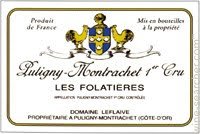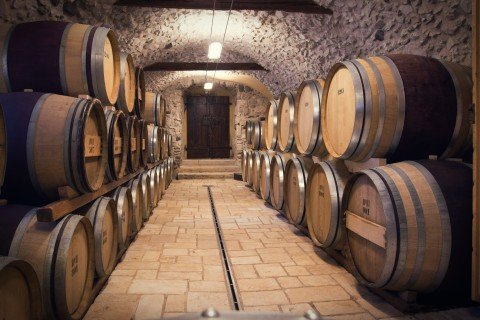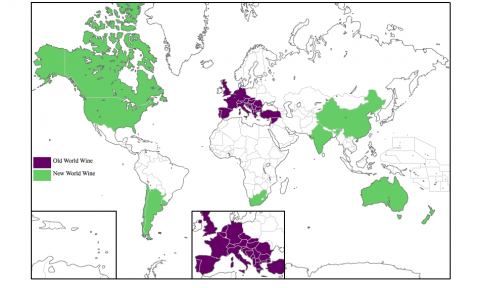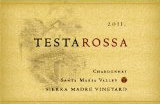What does that mean anyway?
Wait, isn’t there only one world? Earth, right? Sorry to disappoint you sci-fi fans, but we’re talking about wine here, people. Let’s get started with the entry that inspired me to start this wine blog in the first place.
Although the distinction between the Old and New Worlds is geographically simple, the difference between them is vastly different when it comes to their respective wines. Now, there will always be Old World wines made in a New World style, and of course the flipside of that coin. My goal here, however, is to give you a general understanding of what you can regularly expect from each, before a glass is poured or a bottle is purchased. Prepare yourself for a huge piece of knowledge that I’m going to bestow onto you that will change your wine buying, tasting, and gifting forever.
Wait for it…
Old World: Europe.
New World: Everywhere else.
I know what you’re thinking, “That’s it?” I know, because it seems so simple. And, it is. The takeaway here is style. And no, I’m not talking about fashion. Winemaking style is fairly consistent and predictable within the Old and New Worlds respectively. So, saying that you love all Pinot Noir is hard for me to believe, because Pinot from the US is vastly different from the Pinots of Burgundy. However, if you tell me you like Pinot from Burgundy, I’m pretty certain that you’ll like Syrah from Rhone – both being from the Old World. Both, having a fairly predictable style.
This brings me to today’s lesson. I want you all to stop buying wine based on grape varietal (Cab, Pinot, Chard, etc). I want you to start buying wine based on style. This will cut down that dreadful surprise you feel when you order a glass of Chardonnay from one restaurant and love it, and then another and hate it.
So… What’s the Difference Really?
Old World style is based on tradition. Its winemaking techniques have been passed down generationally, sometimes over 100 years. These same practices are now regulated by strict rules to preserve authenticity of a region.
Common Descriptors: terroir, earthy, minerality, elegant, layered, herbaceous, low-alcohol.
Where the winemaking practices of Europe are deeply rooted in tradition, New World winemakers seek to push the boundaries of what is possible. There is more of a focus on technology, efficiency, and a tendency to be more susceptible to popular trends. The New World style focuses primarily on commercial success and making wine that is ready to be enjoyed today – as opposed to being laid down to age in a cellar for decades.
Common Descriptors: fruit-driven, oaky, big, lush, opulent, ripe, high-alcohol.
Let’s take it one step back, if you look back at the Old World descriptors, you’ll see a word that is hard to pronounce – terroir (teh – RAHR). By definition, it’s the set of special characteristics where the geography, geology and climate of a certain place, interact with plant genetics, as expressed in agricultural products. Simply, it means “a sense of a place.” And, winemakers in Europe really geek out on this. They want you to taste what it feels like to be at the vineyard – it’s actually pretty romantic, you guys. It’s what the Old World style is founded on. Conversely, this “earthiness” characteristic seldomly exists in the New World. Many wine enthusiasts – including yours truly – subscribe to a school of thought that wines from the New World are forced to compensate for the absence of this essential component in their wines. They achieve this with massive amounts of oakiness and fruit. How? Great question. Well, generally, the regions of the New World are much warmer than those of the Old. As expected, the grapes are able to get very ripe. So ripe, in fact, that the wine becomes superbly fruit driven and has nostril-burning levels of alcohol. These two aspects are the backbone of the New World style.
A Case Study:
Look closely at how different the wines made from the exact same grape varietal and vintage are reviewed. One is from the Old World and the other from the New.
New World
Chardonnay
2011 Testarossa: Rincon Vineyard
“Brilliant, offers up loads of orchard fruit, poached pear, white flowers and apple tart-like aromas and flavors to go with a full-bodied, rich and layered mouth-feel that stays awesomely focused and detailed. It’s a rich effort, but nothing is out of place and it stays remarkably fresh and vibrant.” – Robert Parker

Old World
Also – Chardonnay
2011 Domaine Leflaive Puligny-Montrachet: “Folatieres”
“Pale, bright yellow. Expressive musky aromas of candied lemon peel, peach, spices and flowers. Silky, fresh and firm, with ripe acidity framing and carrying the flavors of lemon peel and flowers. Lovely stuffing and lift here. Finishes dry and perfumed, with sneaky length and subtle minerality.” – Steven Tanzer
Which is Better?
That debate is generally had between myself and other wine nerds and would likely spur you into a spontaneous narcoleptic nap. The real answer is this… Whichever you prefer. Some people like the fruit aspect of a wine to hit them over the head and those famous liquid Jolly Rancher Pinots of the central coast of California. Others prefer the taste and smells of a barnyard and limestone underneath a more subtle expression of fruit. There is no right or wrong. I can say this though with a high level of confidence: Of the many critical wine tasters I’ve met over the years and have taught wine to, I’ve discovered a consistent trend. As one analyzes wine and winemaking over time, the more one gravitates from the New World to the Old. There is something sexy about subtly and balance. Less, ultimately, is more.
So What Do I Do Now?
If the goal of all of this is a deeper understanding of how to taste, buy, and (most importantly) ENJOY wine more, we need a certain skillset. Knowledge is a very important part of that. Here is your homework: Next time you find yourself loving a wine, make a note of where it’s from. I can almost guarantee if you’re loving a fruit bomb of a Cab Sauv from California, you’ll likely enjoy the same style represented in a Shiraz from Australia. Conversely, if you like a grassy, lemon meringue of a Sauvingnon Blanc from the Loire Valley, you’re likely going to salivate over a crisp, unoaked Chardonnay from Chablis. The same goes for gifts. If your father-in-law has a cellar full of Barolo, buy him something special from Italy or France. Just getting him something expensive from the US is saying that you don’t get it, and potentially more damaging, that you don’t get him. If your significant other lives and dies for Napa Cabs, don’t buy them Bordeaux (despite there being a lot of Cab in there). For a greater rate of success and enjoyment, from henceforth, you will be style-centric rather than grape-centric.
My turn for that glass of wine now. Cheers for now, from your Sommelier Selection.





